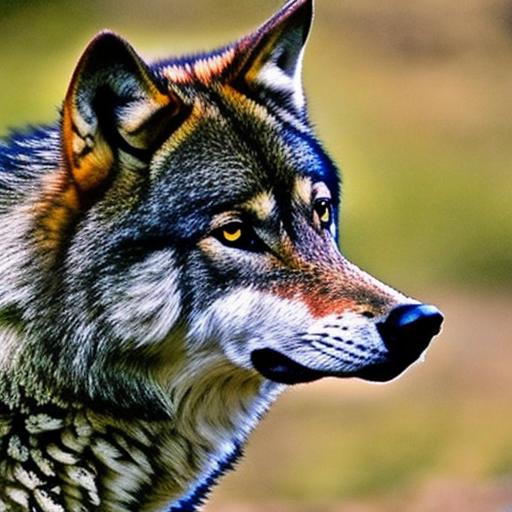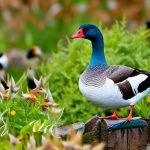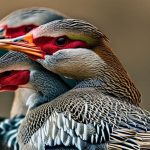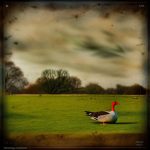Geese are known for their strong social bonds and their tendency to gather in large flocks. They are also highly territorial and can become aggressive when they feel threatened. Geese are also known for their adaptability and intelligence, which makes them a challenging pest to deter. They are attracted to open spaces near water, making parks, golf courses, and other public areas prime targets for geese infestations. Geese are also drawn to areas with short grass, as it provides them with easy access to food and a clear line of sight to spot potential predators.
Geese are also known for their strong homing instincts, which means that once they have established a nesting or feeding ground, they are likely to return to the same location year after year. This behavior can make it difficult to deter geese using traditional methods such as scare tactics or physical barriers. Understanding the behavior of geese is crucial when developing effective strategies for deterring them from public spaces. By understanding their habits and instincts, it becomes possible to develop targeted and effective solutions for keeping geese away from areas where they are not welcome.
Key Takeaways
- Geese are territorial and will avoid areas where they feel threatened, making understanding their behavior crucial for effective deterrence.
- Wolves play a vital role in maintaining the balance of ecosystems by controlling prey populations and preventing overgrazing.
- Creating a life-like wolf replica involves attention to detail and realistic features to effectively deter geese.
- Proper placement and movement of the wolf replica is essential for maximizing its effectiveness in deterring geese.
- Regular maintenance of the wolf replica is necessary for long-term effectiveness, and there are other methods available for deterring geese if needed.
- Using a life-like wolf replica to keep geese away offers a natural and non-invasive solution with numerous benefits for property owners and the environment.
The Role of Wolves in Nature
Wolves are apex predators that play a crucial role in maintaining the balance of ecosystems. As top predators, wolves help regulate the populations of prey species, preventing overgrazing and ensuring the health of plant communities. Their presence also has a cascading effect on other species within the ecosystem, influencing the behavior and distribution of animals such as deer, elk, and smaller predators. Wolves also help to prevent the spread of disease by targeting weak and sick individuals within prey populations, reducing the likelihood of disease transmission.
Wolves are also known for their intelligence and social structure, which allows them to effectively coordinate hunting strategies and defend their territory from competing predators. Their presence in an ecosystem can have far-reaching effects on the overall health and diversity of plant and animal species. The role of wolves in nature is essential for maintaining the balance of ecosystems and ensuring the health and sustainability of natural habitats.
Creating a Life-Like Wolf Replica
Creating a life-like wolf replica involves careful attention to detail and a thorough understanding of wolf anatomy and behavior. The replica must be realistic enough to effectively deter geese, while also being durable enough to withstand outdoor conditions. The first step in creating a life-like wolf replica is to study the physical characteristics and behavior of wolves in order to accurately replicate their appearance and posture. This may involve consulting with wildlife experts or studying wolves in their natural habitat.
Once the physical characteristics of the wolf have been accurately captured, the next step is to create a durable and weather-resistant replica that can withstand outdoor conditions. This may involve using materials such as fiberglass or high-density foam, which can be sculpted and painted to accurately replicate the appearance of a wolf. The final step in creating a life-like wolf replica is to ensure that it is equipped with features that enhance its effectiveness as a deterrent, such as reflective eyes or realistic movement.
Placement and Movement of the Wolf Replica
The placement of the wolf replica is crucial for its effectiveness in deterring geese. It should be strategically placed in areas where geese are known to gather, such as near bodies of water or open grassy areas. The replica should be positioned in a way that makes it visible from a distance, as geese are more likely to be deterred if they can spot the potential threat early on. It is also important to periodically move the replica to different locations within the area to prevent geese from becoming accustomed to its presence.
In addition to strategic placement, the movement of the wolf replica can also enhance its effectiveness as a deterrent. Some replicas are equipped with mechanisms that allow them to move in a realistic manner, such as turning their heads or swaying in the wind. This movement can help create the illusion of a live predator, further deterring geese from settling in the area. Careful consideration should be given to the placement and movement of the wolf replica in order to maximize its effectiveness in keeping geese away.
Maintenance and Long-Term Effectiveness
Maintaining the effectiveness of a life-like wolf replica involves regular inspection and upkeep to ensure that it continues to deter geese over time. Exposure to outdoor conditions can cause wear and tear on the replica, so it is important to periodically inspect it for any signs of damage or deterioration. This may involve repairing any cracks or chips in the material, as well as repainting any areas that have faded due to sun exposure.
In addition to physical maintenance, it is also important to periodically assess the effectiveness of the wolf replica in deterring geese. This may involve monitoring geese activity in the area and making adjustments to the placement or movement of the replica as needed. Over time, geese may become accustomed to the presence of the replica, so it is important to take proactive measures to maintain its effectiveness as a deterrent.
Other Methods for Deterring Geese

In addition to using a life-like wolf replica, there are several other methods for deterring geese from public spaces. One common approach is to use sound deterrents, such as loud noises or predator calls, to scare geese away from an area. Another method is to use visual deterrents, such as reflective tape or decoy predators, to create an environment that is less inviting to geese.
Physical barriers can also be effective in deterring geese from certain areas, such as installing fences or netting around bodies of water or open grassy areas. Landscaping changes, such as planting tall grasses or shrubs, can also make an area less attractive to geese by limiting their line of sight and access to food. By combining multiple deterrent methods, it is possible to create an environment that is less inviting to geese and reduce the likelihood of infestations in public spaces.
Benefits of Using a Life-Like Wolf to Keep Geese Away
Using a life-like wolf replica as a deterrent for geese offers several benefits for public spaces and natural habitats. By accurately replicating the appearance and behavior of a wolf, these replicas can effectively deter geese from settling in areas where they are not welcome. The strategic placement and movement of the replicas further enhance their effectiveness in keeping geese away over time.
In addition to being an effective deterrent, using life-like wolf replicas is also a humane method for managing geese populations without causing harm to the birds. This approach allows for coexistence with wildlife while minimizing the negative impacts of geese infestations on public spaces and natural habitats. By understanding the behavior of geese and utilizing targeted deterrent methods, it is possible to create environments that are less inviting to geese and promote harmony between humans and wildlife.
Looking for effective ways to keep geese away from your property? One interesting approach is using a life-like wolf decoy. According to a recent article on PoultryWizard, placing a realistic wolf decoy in the area can deter geese from coming too close. This method is not only effective but also humane, as it doesn’t harm the geese in any way. To learn more about innovative solutions for managing poultry and wildlife, check out PoultryWizard’s article on chicken coop trampolines, snaplock chicken coops, and feeding ducks.
FAQs
What is a life-like wolf used for?
A life-like wolf is used as a deterrent to keep geese away from a specific area. The presence of a predator, such as a wolf, can discourage geese from entering an area, as they perceive it as a threat to their safety.
How does a life-like wolf work to keep geese away?
The presence of a life-like wolf can create a sense of fear and danger for geese, causing them to avoid the area. Geese are naturally wary of predators, and the sight of a wolf can trigger their instinct to flee and seek safety elsewhere.
Where can a life-like wolf be used to keep geese away?
A life-like wolf can be used in various outdoor settings, such as parks, golf courses, agricultural fields, and other areas where geese may be a nuisance. It is important to strategically place the wolf in areas where geese are known to gather or cause problems.
Are there any potential drawbacks to using a life-like wolf to keep geese away?
While a life-like wolf can be an effective deterrent for geese, there are some potential drawbacks to consider. For example, geese may eventually become accustomed to the presence of the wolf and may no longer perceive it as a threat. Additionally, the effectiveness of the wolf may vary depending on the specific behavior and habits of the geese in a particular area.
Are there any alternative methods for keeping geese away?
There are several alternative methods for keeping geese away, including using visual deterrents, sound devices, physical barriers, and landscaping techniques. Each method has its own advantages and limitations, and the most effective approach may depend on the specific circumstances and environment where geese are causing issues.
Meet Walter, the feathered-friend fanatic of Florida! Nestled in the sunshine state, Walter struts through life with his feathered companions, clucking his way to happiness. With a coop that’s fancier than a five-star hotel, he’s the Don Juan of the chicken world. When he’s not teaching his hens to do the cha-cha, you’ll find him in a heated debate with his prized rooster, Sir Clucks-a-Lot. Walter’s poultry passion is no yolk; he’s the sunny-side-up guy you never knew you needed in your flock of friends!







